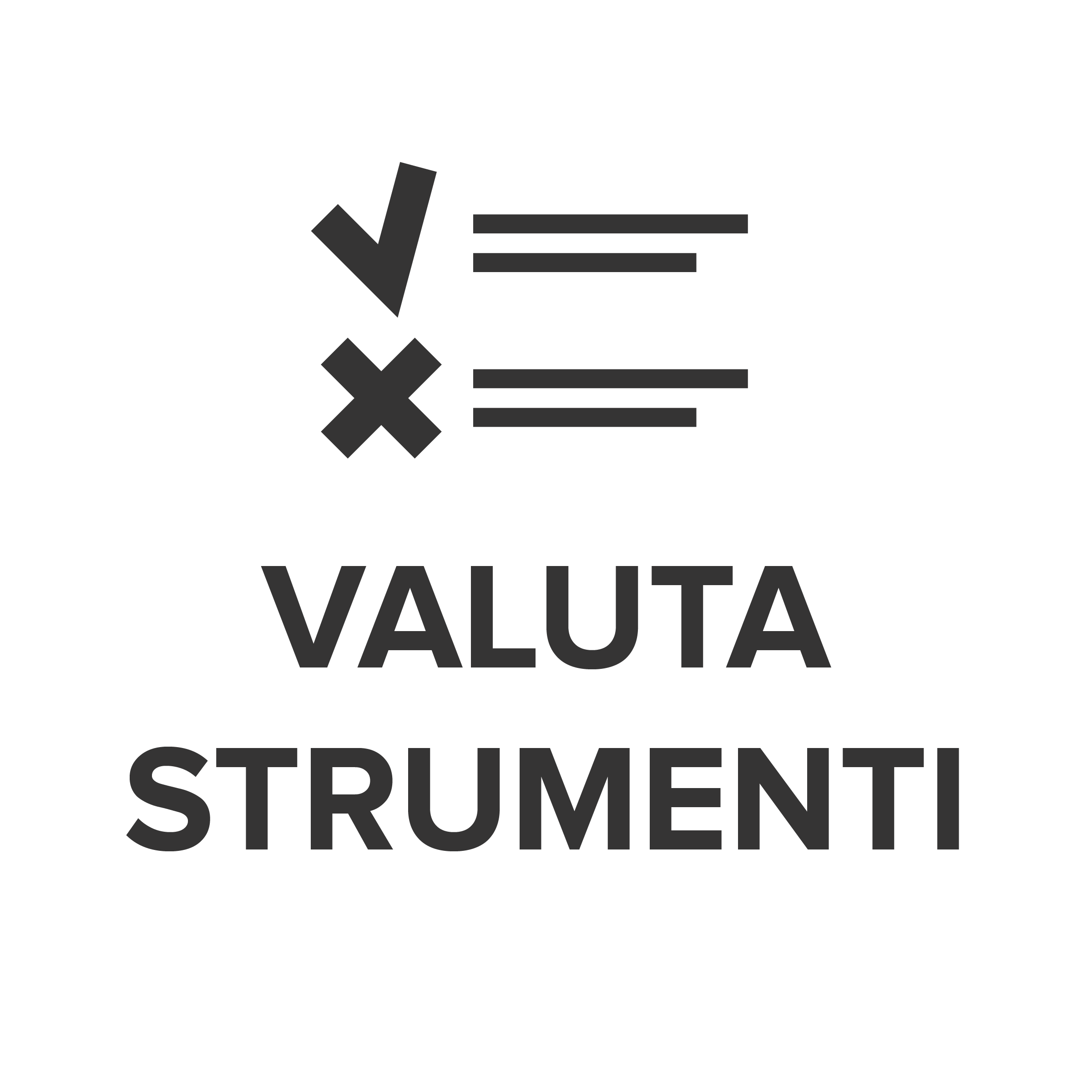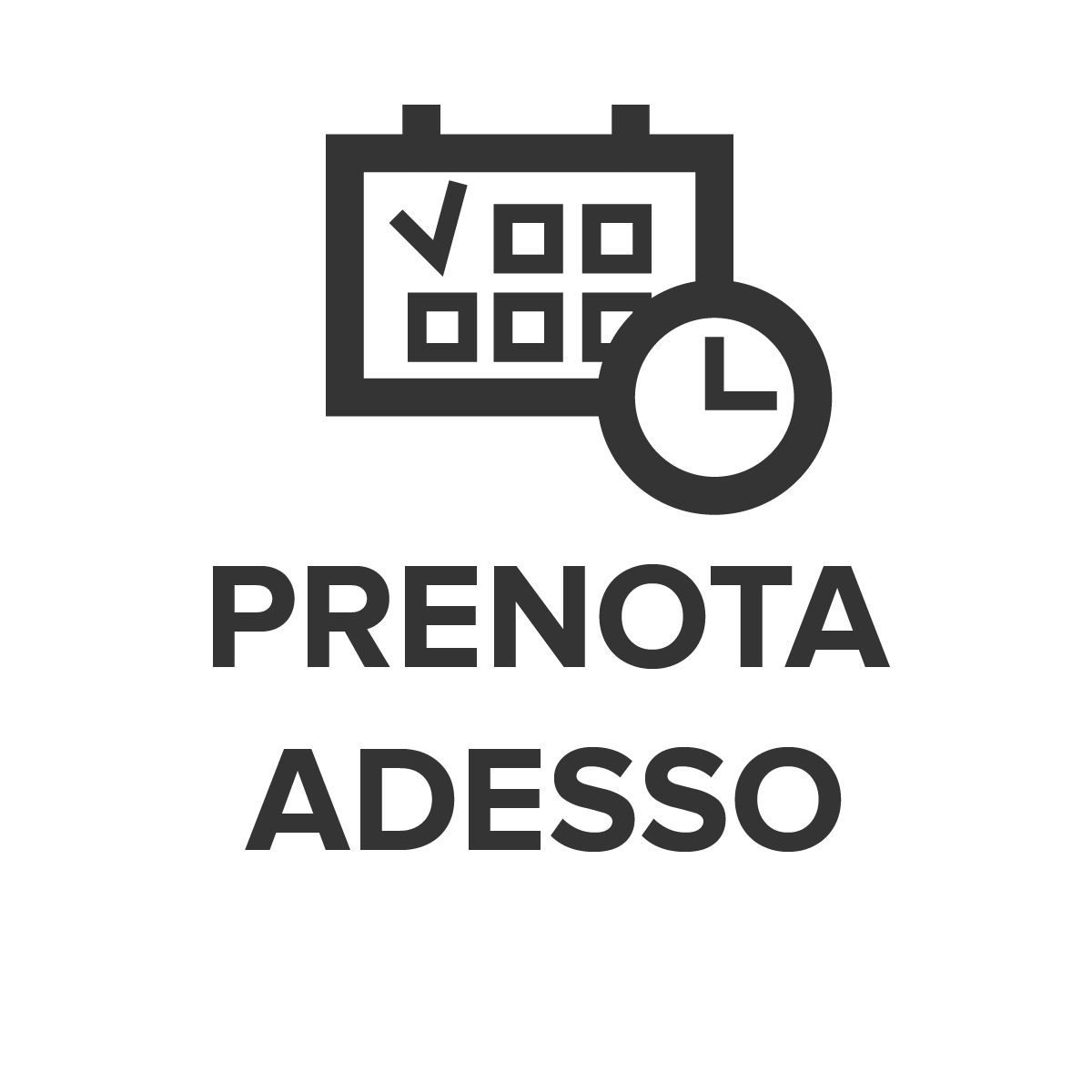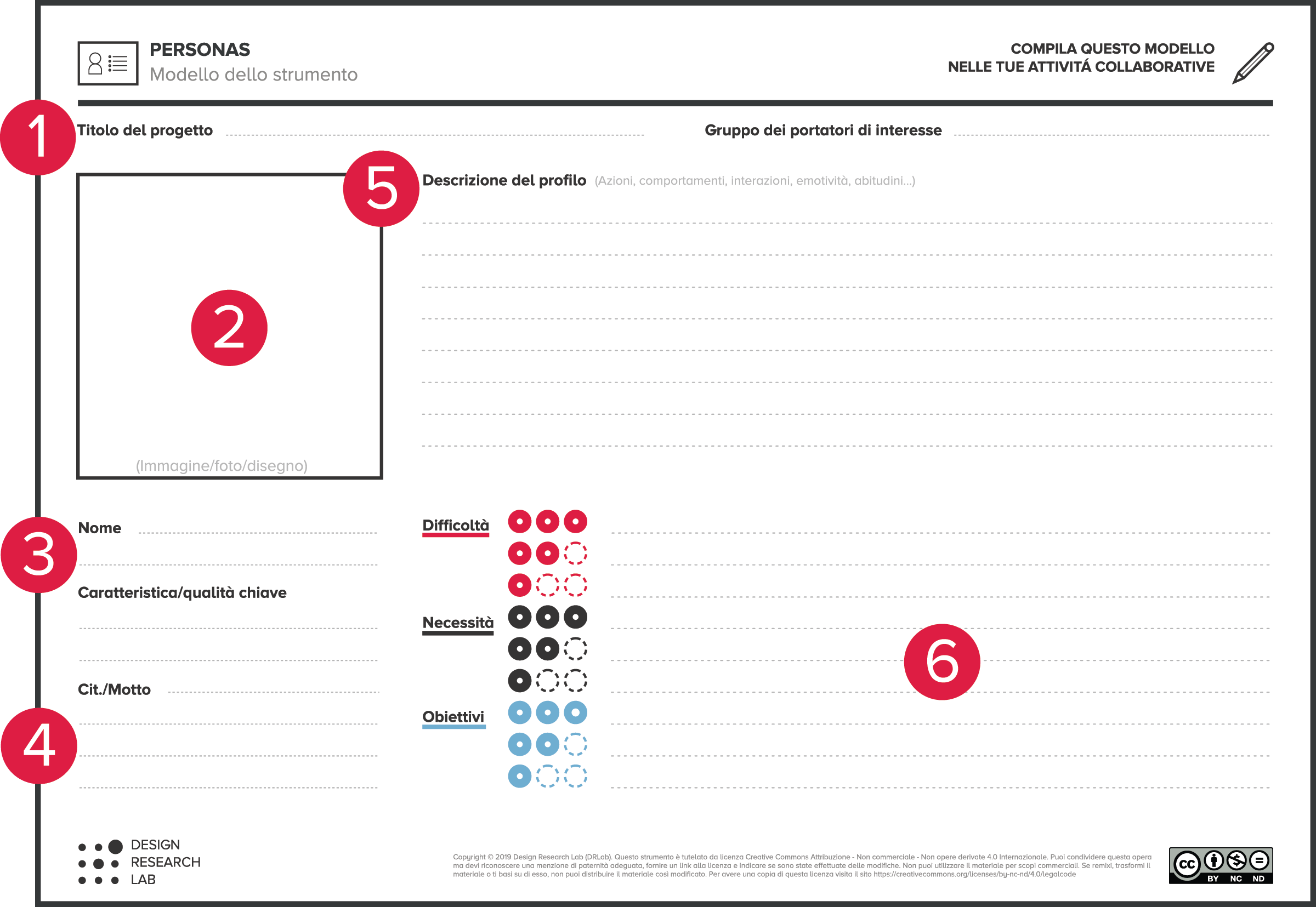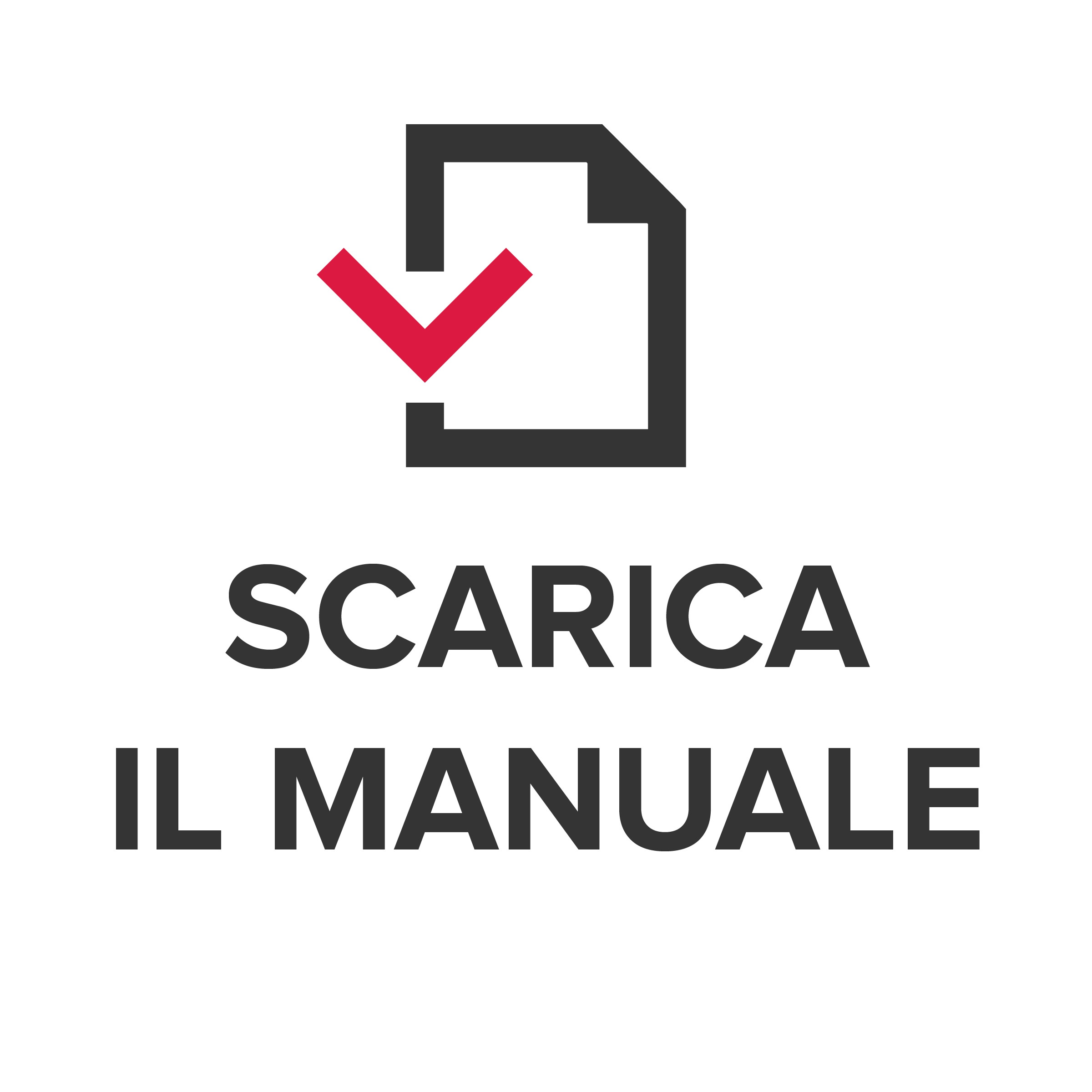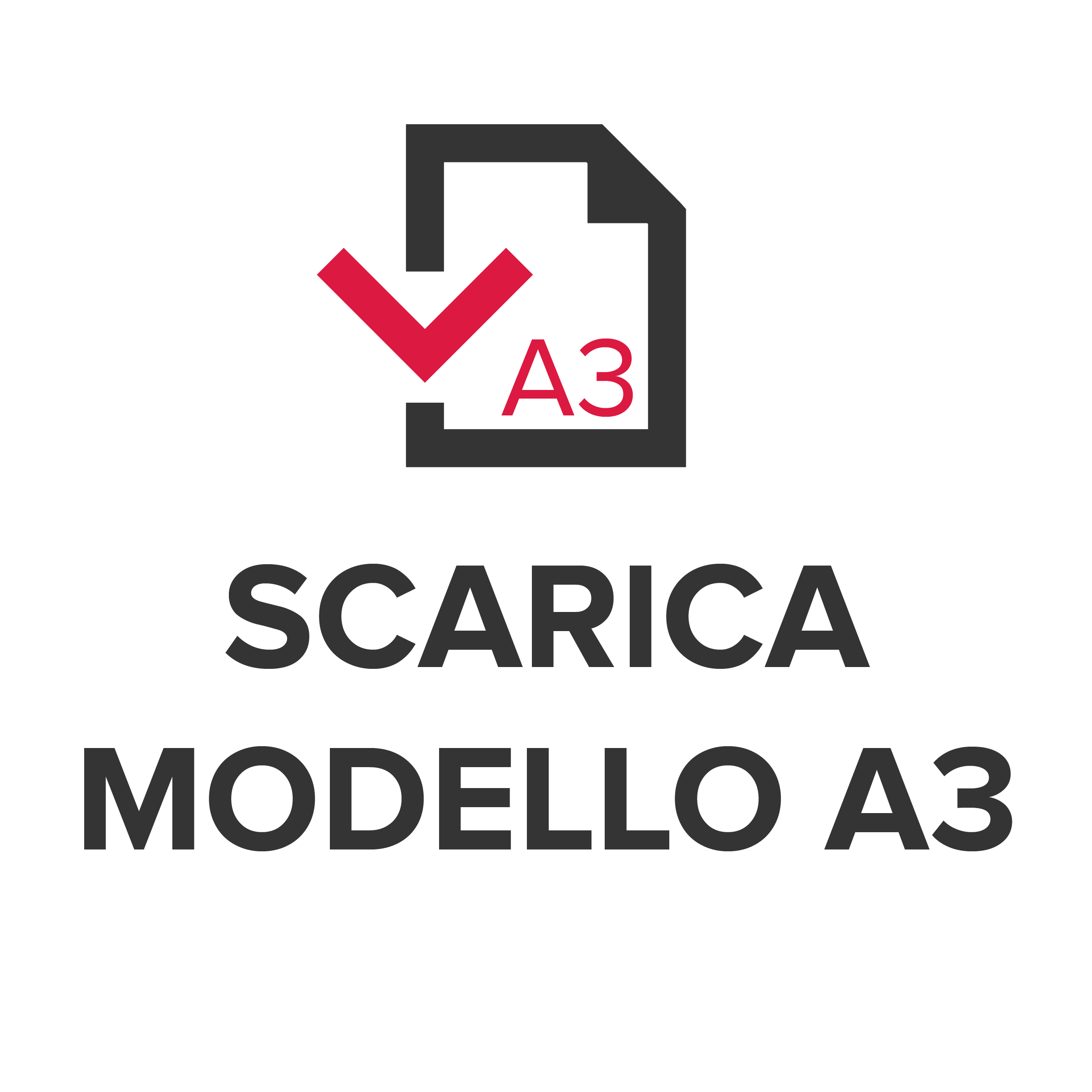
Representative profile of a particular group of people, such as a market segment, a user group, or any group of stakeholders. The profile is not a stereotype, but an archetype that is based on real research and, although fictitious, helps to identify groups with similar needs and behaviors.
Download The manual for the use of the instrument with suggestions e instructions.
For an in-depth theoretical study click here.
Your opinion is important to us. Please rate the tool based on your experiences or for how you would like to use it.
Take advantage of the new free service "Remote Lab". Request an appointment by filling out the form.
Tips
Indications from the DRLab experience for using the tool.
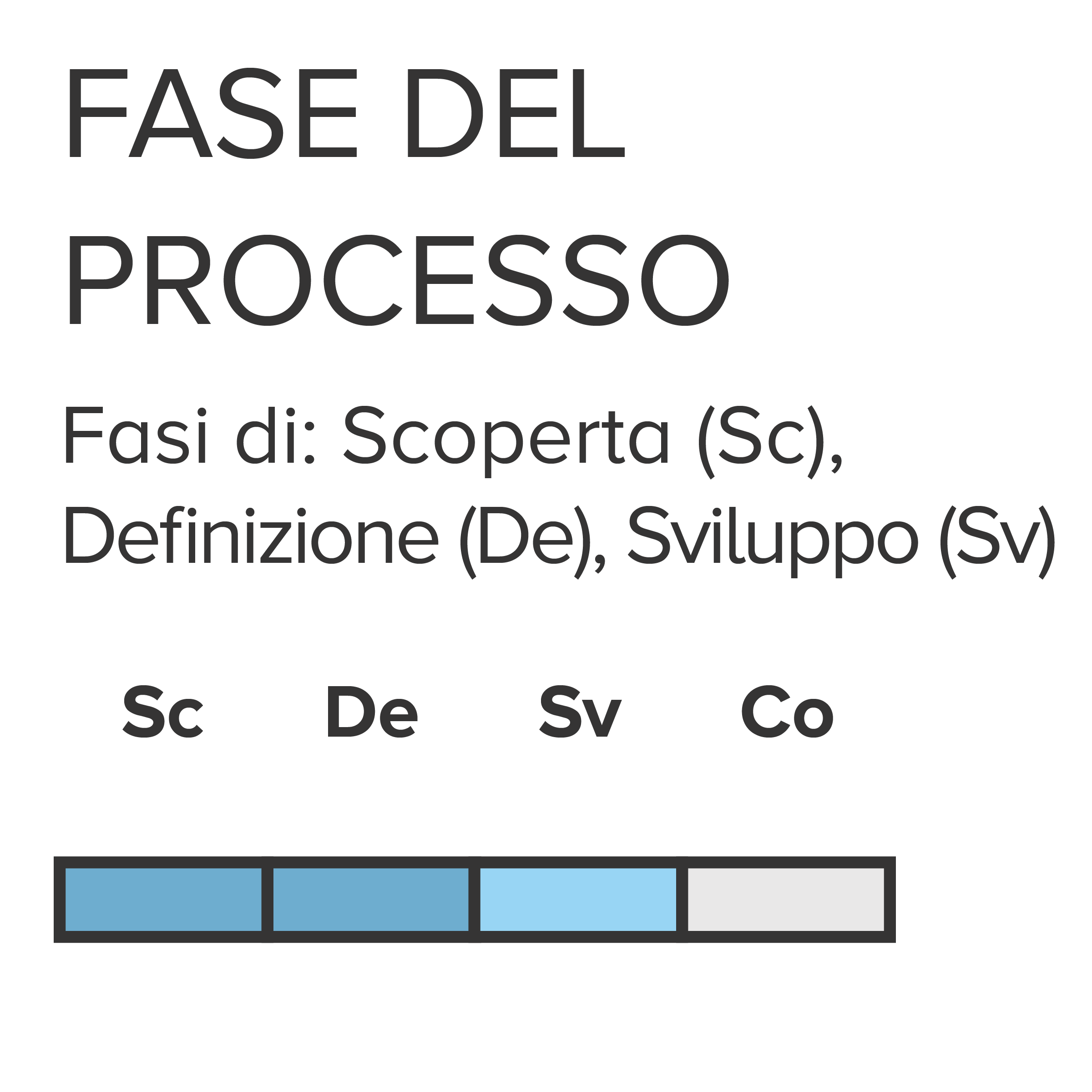
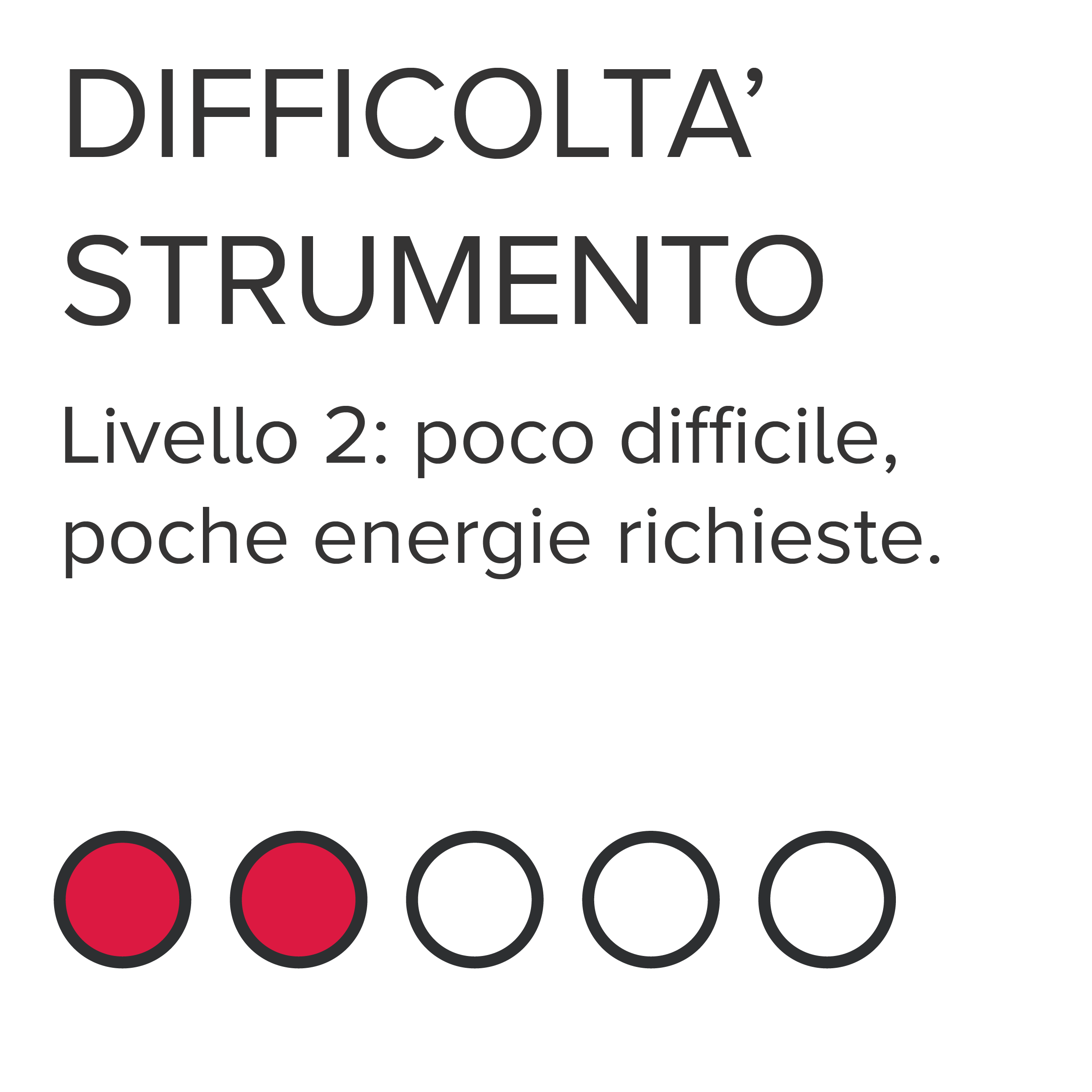
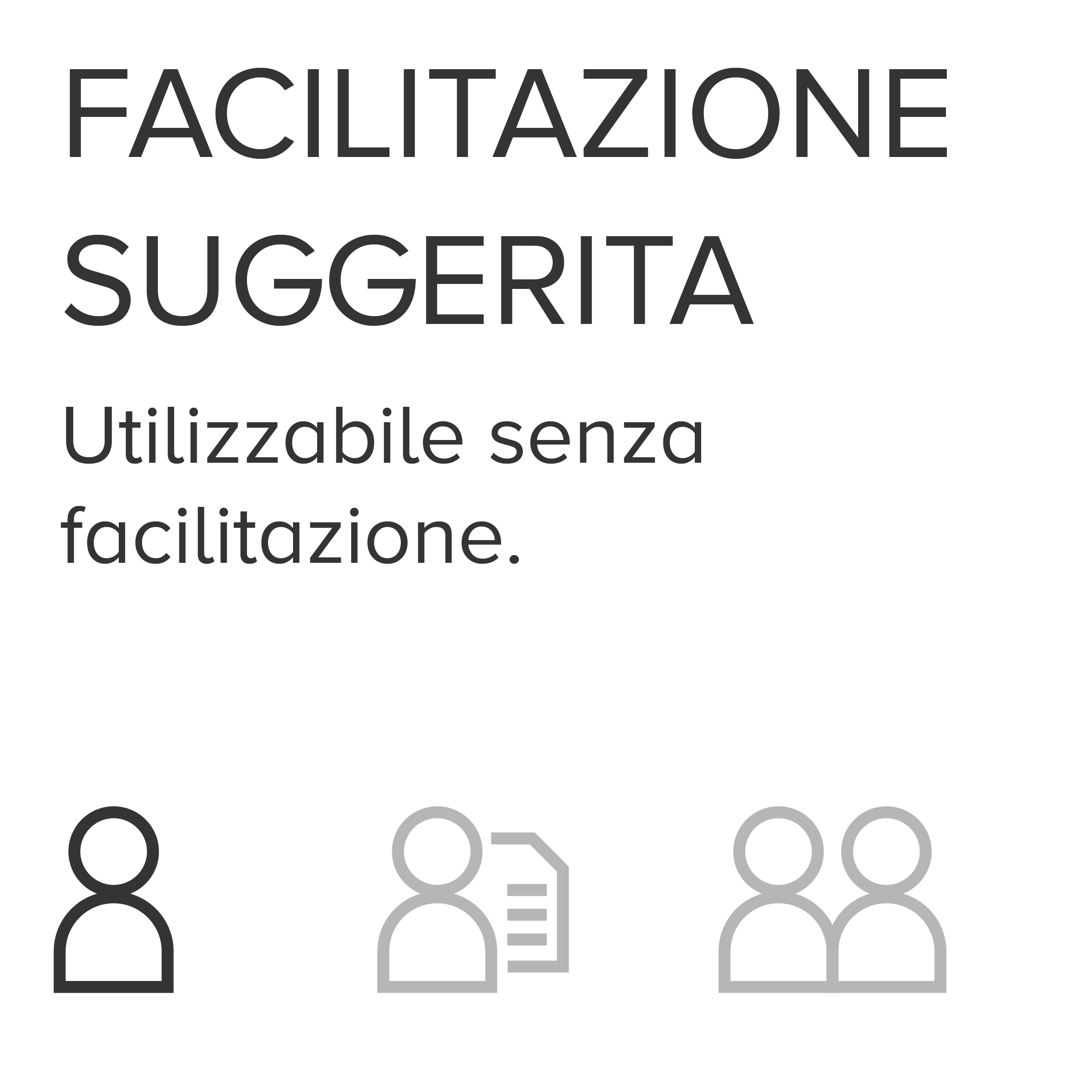
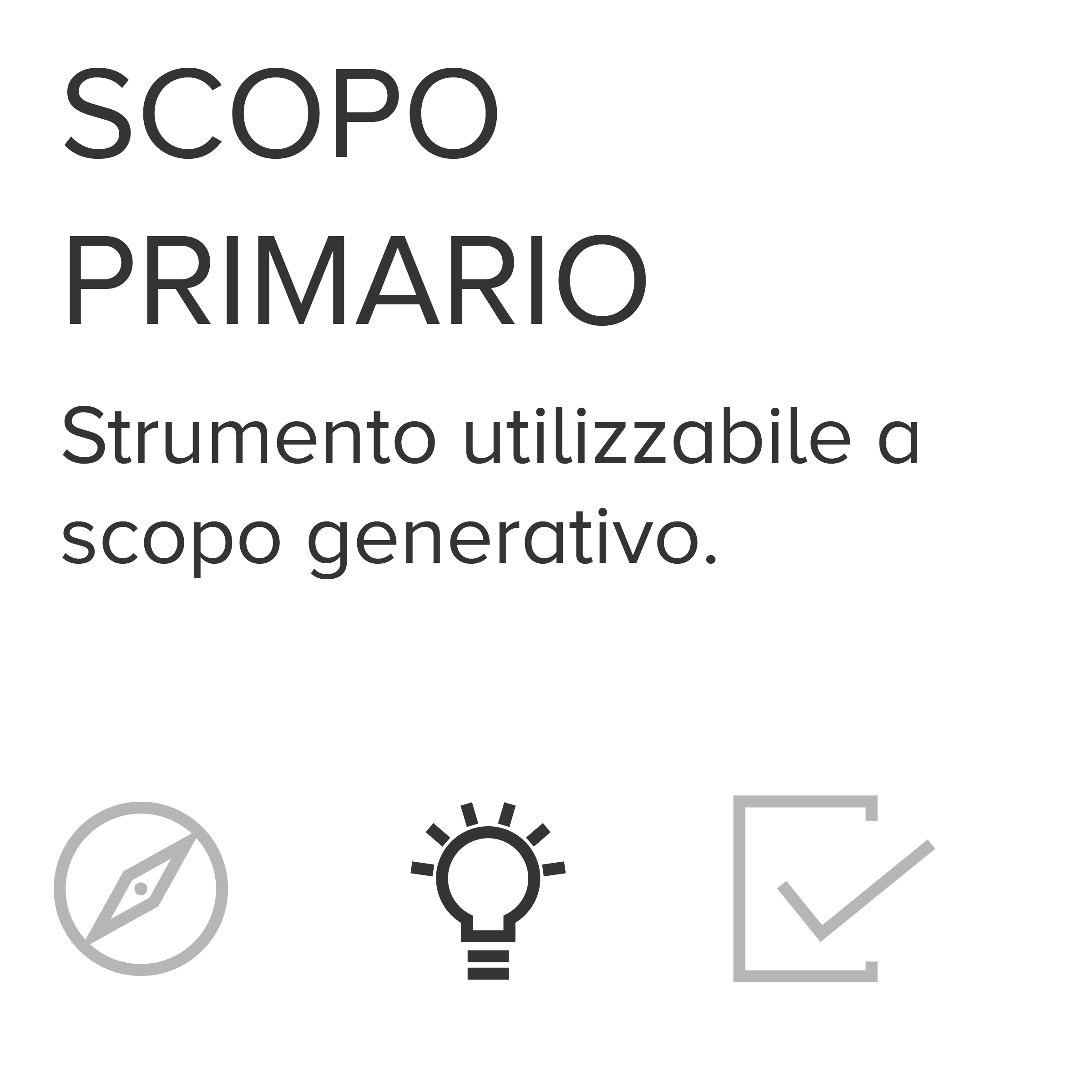
Instructions for compilation
1. Indicate the title of the project. Indicate the group of stakeholders To which the profile belongs.
2. Draw or include a representative profile picture while avoiding using images that refer to gender, ethnicity, or stereotype bias.
3. Assign a name to the profile that reflects the following characteristics:
- immediately suggests the cultural and social environment to which it refers,
- indicates a key characteristic or quality of the profile that immediately links it to a stakeholder group.
4. Write a motto or quote that helps summarize the attitude of the profile in a single sentence.
5. Describe the profile through characteristics that can reveal the person's personality, attitudes, interests, special abilities, needs, expectations, motivations, frustrations, or histories. Include details that are important with respect to context and goals.
6. Describe problems or difficulties, desires or ambitions, of the profile in relation to the context or goals. Assign each of the indications a reference value according to their importance or impact.
Share your experience with us and strengthen your skills.
Please contact us if you would like to share your experience of using the tool, or if you have doubts and want to use it but do not know how.
